Tag: Building Trust Essay Contest 2025
Language, Lemonade, and Trust
M showed up with pain—and a warning.
I was volunteering at our annual community health screening, handing out produce as neighbors trickled in. She stood a little apart, gaze steady, as if measuring what this space might expect of her.
“My sister-in-law told me to come,” she said, avoiding eye contact. “She said, ‘Go fix this pain, if it’s even real.’”
That phrase hung in the air. It wasn’t just the heat that made her uncomfortable. Her pain had been questioned so often that even her own family doubted it.
When she asked if we had a women’s doctor, I explained that no OB/GYNs were on site, but family medicine physicians were available. She hesitated. Then, after a long pause said “Take me there.”
I escorted her to the mobile clinic parked in the yard. From my station at the food table, I noticed she never went in. She stood outside, alone.
I walked back. “Is everything okay?” I asked. Her eyes were glassy. We sat down in the shade, and I handed her a cup of lemonade.
“It won’t make a difference,” she said, barely above a whisper. “They never listen. They always think it’s in my head.”
The words hit hard, not because they were new, but because I’d heard versions of them from so many women, especially women of color.
As we talked, she told me she was Haitian and how glad she was to have moved to a neighborhood where she could still speak her language. I shared that I speak Mauritian Creole. Her eyes lit up. We traded words, laughed about the similarities. It wasn’t just a moment of levity, it was a moment of relief. A rare space where she didn’t have to explain herself.
She opened up about her endometriosis, the gut-wrenching, days-long pain she’d been told to endure as if it were normal. She told me about the creative ways she coped that sometimes made things worse before they helped. Then, almost shyly, she shared a dream. “Once I’m free of this pain,” she said, “I want to visit every national park in the United States.” There was light in her eyes when she said it, the kind that only shows up when someone imagines something better.
“People say pain is just part of being a woman,” she said. “Do you believe that?” I asked.
“No,” she replied. “God didn’t put me on this earth to suffer like this.”
“I’m sorry,” I told her. “For everyone who made you feel like your pain didn’t matter. I believe you.”
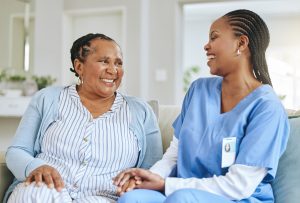
Eventually, she asked me to walk her to the van. This time, she stepped inside.
I didn’t do anything. I didn’t convince her with evidence or push her with urgency. I simply stayed and listened. That moment reshaped how I understood professionalism: sometimes, showing up without answers is the most professional thing you can do.
Professionalism isn’t found in performance, but in presence. Not in always knowing what to say, but in being brave enough to say nothing at all.
Medical professionalism today is shifting. It’s less about authority, more about accountability. Less about expertise alone, more about empathy. For M, trust didn’t come from credentials, it came from feeling seen.
Her mistrust wasn’t irrational. It was earned through years of being dismissed. It wasn’t resistance. It was protection. And it reminded me that trust isn’t given. It’s built. Slowly. Earned through consistency, humility, and time.
M and I were the same age—two children of islands, raised oceans apart but shaped by stories of strength, resilience, and quiet endurance. At that moment, we weren’t roles or labels. We were simply two people, meeting in a shared space of vulnerability, trying to make sense of a system that hadn’t always made room for voices like ours.
I never heard what her doctors said inside the van. But I remember the silence before, when two strangers sat in the heat and listened each other into visibility.
As I move forward in medicine, I carry her story like a thread woven into my own. M reminds me that trust didn’t come through answers. It came through shade, silence, language, and lemonade. No diagnosis. No cure. Just two people, seen.
Ashwarya Devason is a first-year student in the Harvard/MIT MD-PhD program, where she plans to pursue a PhD in neuroscience. Originally from Mauritius, she completed both her undergraduate and master’s degrees at the University of Pennsylvania. As an aspiring physician-scientist, Ashwarya is committed to translating discoveries from bench to bedside and addressing health care challenges through an interdisciplinary lens grounded in social determinants of health.
Bridging the Divide: Trust, Power, and the Modern Physician
“Dom, I had to call a rapid on your lady overnight.”
I shook my head as I settled in at my workstation, pushing back the irritation rising in my chest. I had spent the last two days going back and forth with Ms. J about how to get her atrial fibrillation with rapid ventricular response under control. She had adamantly refused metoprolol and amiodarone, citing how terrible and nonfunctional they made her feel. At home, she had been cutting her amiodarone in half before stopping it altogether one month ago. She was an active woman who spent her retirement volunteering in service to others. Her independence was non-negotiable, and she refused anything that made her feel like a shell of herself.
I value patient-centered care, but as her heart rate climbed and she refused every intervention, I began to question how much autonomy patients should be afforded in life-threatening situations. My team saw her as difficult. A part of me agreed.
This rapid response felt like an “I told you so” moment. I reviewed Ms. J’s telemetry and headed to her room. She heard me coming and was halfway out of bed when I walked in.
“I told them I’m gonna get that little black heffa in the morning.”
She was serious, but I could also hear the relief in her voice. I had grown used to that kind of colloquial reception from my older Black patients. Our cultural familiarity fosters connection, but it also carries an unspoken pressure to get things right. I exist within a system not built for many of the patients it now serves, yet I am seen as its representative. I’m the one that patients confide in, and I’m the one expected to explain and defend decisions shaped by a system they’ve learned to approach cautiously. I feel like a bridge between two worlds that are only somewhat familiar with each other and whose history is tainted with distrust.
“Ms. J, you had them scared last night. What happened?”
“That night doctor bout scared ME to death!” She described the panic of people rushing in, adjusting monitors, and whispering among themselves—never asking how she felt, never making her feel seen.
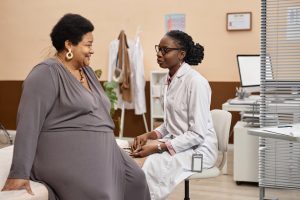
After that night, something shifted. Ms. J remained firm in her convictions. She still refused beta blockers but was more willing to talk through her reasoning. I stopped trying to win the argument and started listening. She was not reckless. She was tired. Tired of being told what to do. Tired of feeling like her life belonged to doctors and not herself. “They act like I’m stupid,” she told me, eyes narrowed. “But I’ve been in this body longer than any of y’all been practicing.”
This wasn’t just a medical disagreement. It was a generational and cultural standoff wrapped in the urgency of a life-threatening situation. My training told me to guide her toward evidence-based therapy, but my gut and lived experience led me to pause and meet her where she was. Ms. J taught me that what we call professionalism doesn’t always feel like care to the person receiving it. I was being molded by a system that prizes composure, neutrality, and respect for hierarchy. She had spent years on the other side of that performance, learning to associate it with dismissal and coldness. Our understanding of professionalism came from different worlds, but our connection allowed us to create a shared one.
After many conversations, we agreed on electrical cardioversion. It worked. Both her rhythm and our trust were restored. There were still difficult decisions ahead, but we had fought and won the immediate battle together. This felt like a major victory.
This is what professionalism should look like: compassionate negotiation, not cold authority. True partnership, not paternalism. Our patients are advocates and survivors, not passive recipients of care. They bring lived experience to the table. Their trust must be earned and reestablished. Trust is not built through force or fear. Today’s medical professionalism means listening through discomfort, honoring agency, and seeing patients as whole people.
When we rid ourselves of rigid, outdated models of health care and choose to meet patients and colleagues with curiosity, humility, and authenticity, we can begin to heal some of the harm caused by our medical establishments and build something more genuine in its place. A reimagined professionalism is about showing up fully human, accountable, and open to learning alongside those we serve.
Dominique Mosley, MD, is a first-year internal medicine resident at Emory University with a passion for patient empowerment and culturally responsive care. She is particularly interested in women’s health, hematology/onco
A Lesson in Listening
After graduating from college, I lived on an isolated farm in the heart of South India, separated from my support systems by ten time zones and thousands of miles. I was working at a residential home for people with intellectual disabilities before beginning medical school, and hoped to learn how community-based medicine and psychiatric care can approach disabilities globally.
Once I arrived at the residential farm, however, I spent most of my time learning to hand wash my clothes, tell chicken feed apart from cow manure, and nod along even when I couldn’t parse through the rapid-fire Tamil everyone spoke. On my third day, I woke up with a stuffy nose, and for the next week, I spent sleepless nights flipping from side-to-side and using Flonase. When the villagers saw me, they made fun of my neon green nasal spray and encouraged me to try herbal leaves and teas. After all, they didn’t trust Western medicine, doctors, or practices. They managed epilepsy with a Keto diet and behavioral issues with twice-daily community yoga sessions.
My nose was particularly clogged one day, and I was sleep-deprived. I was talking to Kavi, a student who led morning yoga, and as he began telling me about the healing powers of hibiscus tea, I interrupted impatiently, “Flonase works. Scientists have extensively studied inflammation, and the chemical corticosteroids in the medicine can inhibit this pathway. It’s not just Flonase. In America, we have antiepileptics and mood stabilizers and antipsychotics, all of which could help the students here…”
When I finished, Kavi smiled and simply said, “Thank you.” I looked around the yoga circle, which was filled with nervous laughter, silent nods, and lowered eyes. My face felt hot as I realized I had gone on a five-minute tirade riddled with medical jargon in rapid-fire English.
Later, this exchange reminded me of Raymond Carver’s poem, “What the Doctor Said,” in which a patient, given bad news, does not understand everything the doctor says but still shakes his hand and even thanks him—“habit being so strong.”
Of course, the only thing Kavi could say was a friendly thank you, even if he was confused, distrustful, or disagreed with me. After yoga, I apologized and asked him to tell me about the tea.
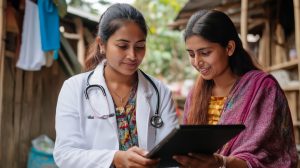
He spoke slowly because he knew my ears had not adjusted to the village slang. His parents married at 11 and had him at 15. Due to a birth complication, Kavi was born with cerebral palsy. His childhood was filled with abuse and family strife as he tried to control his seizures. He described negative experiences with doctors, many of whom assumed disability was synonymous with mental retardation. I realized his skepticism was not necessarily distrust, but a reasonable mistrust—many other students at the residential home had been overmedicalized and overtreated with drugs that had significant side effects.
Kavi asked about my life in the United States and never interrupted me. I told him how it took a day to get to India. He asked if it was by train or bus. I explained the plane ride. To him, Madras and Massachusetts were neighbors. Parts of Kavi’s world were unknown to me, and parts of mine were unknowable to him. Still, he approached everything I said with curiosity. In Kavi, I found an unexpected mentor, and through our conversations, I began to love a community mistrustful of the type of medicine I hoped to practice.
Most medical professionals interrupt patients within 11 seconds of them talking. When we move quickly—whether by choice, necessity, or habit—patients are forced to do the same. It may feel impractical to take time to understand someone so different from us, but it is necessary. Kavi taught me that these discussions are about inviting—not convincing—one another to adopt new ideas.
I embraced a model of professionalism that prioritizes listening, respect for alternative medicines, and shared decision-making over expert biomedical solutions. Learning about the solace he found through natural remedies and yoga inspired much of my work in medical school. I now conduct clinical research that builds data-driven arguments for yoga-based interventions to complement existing psychiatric treatments.
Ultimately, I vow to learn from Kavi and from Carver’s poem. I vow to never make a patient feel ashamed to ask for clarification, as if it were a third serving of dessert. I vow to slow down, even if time constraints prevent me from giving necessary thank you’s and endow upon me undeserved ones. I vow to learn from patients’ questions, ideas or, even, mistrust.
Akila Muthukumar is a first-year medical student at Harvard Medical School. She studied developmental biology and English in college and hopes to continue writing throughout her career. She also enjoys bagel shops, board games, and all things theater!
Trust and Professionalism in Caring for Patients with Physical Disabilities
During my medical training, I met Mr. J, a patient who had been wheelchair-bound for years following a severe car accident. He was sharp, independent, and well aware of the challenges he faced in health care settings. When I entered the exam room, he greeted me with a knowing smile.
“So, how do you want to do this?” he asked. “Most doctors just do the exam while I’m in my chair.”
I hesitated for a moment before responding. “A full physical exam involves checking areas that may not be easily accessible while you’re seated. For example, assessing your lower back, hips, and reflexes thoroughly is easier when you’re lying down. It also allows me to check for any pressure sores or areas of discomfort that might not be as noticeable in the chair.”
His brow furrowed. “Is that really necessary? No one else has asked me to do that.”
I had learned in class that many patients with disabilities don’t receive comprehensive physical exams because providers are unsure how to safely transfer or position them. Without proper training or accessible equipment, many physicians opt for an incomplete assessment, unintentionally reinforcing a health care system that overlooks their needs.
“I don’t want to assume the best way to help,” I said. “Would you be comfortable talking through options? Maybe a sliding board, or a two-person lift?”
His expression shifted from skepticism to mild surprise. “Most people don’t ask,” he admitted. “They just try to move me, or worse, skip the exam altogether.”
We talked through the logistics. Could he lift himself with some support? Did he experience spasms that might make the transfer more challenging? As we discussed a two-person lift, he eyed me warily.
“No offense, but you’re not exactly built like a linebacker,” he said.
I grinned. “Fair point. Neither is my colleague, but this is about technique, not brute strength. I’ll take your feet, and they’ll wrap their arms around your chest. On the count of three, we’ll lift together.”
He nodded slowly. “Alright. Let’s do it.”
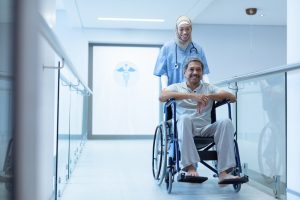
Together, with careful communication and adjustments, we made the transfer safely. Throughout the process, I checked in with him—“How’s that? Need a break?”—ensuring he remained actively involved.
By the time he was settled, I could tell we had built something essential: trust. Later, I reflected on the interaction. Trust isn’t automatic in medicine; it’s earned through respect, collaboration, and time. Studies show that only 40.7% of physicians feel confident in providing the same quality of care to patients with disabilities as they do to able-bodied patients1. The lack of accessible exam rooms, proper equipment, and training contributes to disparities that cannot be solved by policy changes alone. What is needed is a cultural shift, where providers actively listen, learn, and include patients in decisions about their care.
However, another crucial aspect of patient care is recognizing and addressing the assumptions that often surround disability. People, including health care professionals, frequently assume that those with disabilities do not live fulfilling, independent lives. They may assume that a patient with a disability cannot drive, requires a full-time caregiver, or is not sexually active. Questions like “Who drove you here?” or “Do you have someone to help you at home?” while sometimes well-intentioned, can inadvertently reinforce stereotypes rather than respecting the individual’s autonomy.
The reality is that 13% of people in the United States have a disability, and many lead active, self-sufficient lives2. They work, engage in relationships, have families, and participate fully in society. Assuming otherwise not only alienates patients but also diminishes the quality of their care. Physicians must move beyond assumptions and instead ask open-ended questions that allow patients to define their own capabilities and needs.
As I left the room, Mr. J looked at me thoughtfully. “I’m glad you asked,” he said. “I know a lot of people with disabilities, and sometimes doctors just group us all together. But every disability is different.”
His words stayed with me. Professionalism in medicine is not just about knowledge or technical skill—it’s about recognizing that every patient, regardless of ability, deserves thorough, equitable, and compassionate care. By embracing adaptability and lifelong learning, future providers can build a system where trust is not an exception, but the foundation of every patient interaction.
Manal Imran, MS, is a third-year medical student at the Herbert Wertheim College of Medicine. Born and raised in Florida, she was inspired by the state’s vibrant diversity to pursue a career rooted in equity and inclusion, with a particular interest in improving access for patients with physical disabilities. In her free time, she enjoys traveling, spending time in nature, and practicing photography.
References
- Iezzoni, L. I., Rao, S. R., Ressalam, J., Bolcic-Jankovic, D., Agaronnik, N. D., Donelan, K., Lagu, T., & Campbell, E. G. (2021). Physicians’ Perceptions Of People With Disability And Their Health Care. Health affairs (Project Hope), 40(2), 297–306. https://doi.org/10.1377/hlthaff.2020.01452
- Persons with a disability: Labor Force Characteristics – 2023. Bureau of Labor and Statistics. (2023). https://www.bls.gov/news.release/pdf/disabl.pdf
Bridging Generations, Building Trust
Trust is not simply given in medicine—it is earned, nurtured, and sometimes restored. I learned this lesson firsthand as a medical student on my first clinical rotation at the VA hospital. My attending physician was a seasoned internist with a direct but deeply knowledgeable approach, and my patient, I will call them Mr. Thompson, was a Gulf War veteran who had long distrusted the medical system. As a young trainee, I found myself navigating different generational values and approaches to care.
Mr. Thompson had been admitted for heart failure exacerbation, and his chart was filled with notes about his reluctance to adhere to medical recommendations. He resisted interventions, questioned every test ordered, and bristled at what he perceived as “textbook” explanations. He distrusted medical authority, citing past experiences where he felt unheard when his wife was dying.
In contrast, my attending valued efficiency and expertise; he had seen how swift decision-making could improve outcomes, and he approached patient interactions with a focus on providing the best possible care within the constraints of a busy clinical setting.
As a student, I had more time than my attending, so I sat with Mr. Thompson whenever I could. I listened to his stories, listened to his concerns, and gradually earned his trust.
One morning, he surprised me by asking, “What would you do if you were in my shoes?” I hesitated, aware of the weight of his question. Instead of giving a direct answer, I shared what I had learned about his condition, his options, and the likely outcomes. We discussed his fears, his hopes, and his goals of care. He nodded and finally agreed to a diuresis plan—a breakthrough moment that highlighted the importance of shared decision-making.
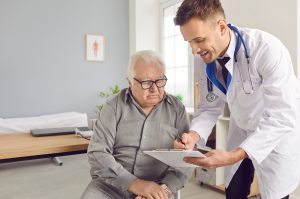
When I presented this to my attending, he offered a different perspective. “It’s important to guide patients without overwhelming them,” he said. “They need us to help them make the best decision for their health.” This moment forced me to reconcile two professional ideals: the authority of medical expertise and the necessity of patient-centered trust. I realized that trust is not a static expectation but an evolving dialogue.
Mr. Thompson did not need blind reassurance—he needed to feel like an active participant in his own care. My attending, too, had a valid perspective, shaped by decades of experience where clear, direct guidance had helped countless patients navigate complex medical decisions.
Over the following days, I continued to work closely with Mr. Thompson. We spoke not only about his medical condition but also about his experiences in the military, his family, and what mattered most to him. In these conversations, I saw how trust was built—not through grand gestures, but through small, consistent acts of presence and understanding. He began to express more confidence in our team’s recommendations, and by the time he was ready for discharge, he was engaged and motivated in his care plan.
While medical knowledge and efficiency are critical, they must be balanced with empathy and partnership. The generational divide between my attending and Mr. Thompson was not just about differing communication styles—it reflected broader shifts in medical professionalism. The traditional model of medicine emphasized physician authority, while modern expectations prioritize shared decision-making. Neither approach is inherently right or wrong, but bridging them requires adaptability, humility, and, above all, trust.
Max Holt is a second-year medical student at the University of Iowa Carver College of Medicine with a background in biology and philosophy from Luther College. He is interested in gastrointestinal research, rural health, and medical ethics, and is currently involved in projects on rib fracture management and colonoscopy access in rural populations.
What We Hold and What We Share
There is no word for “gay” in Urdu.
As a child, I thought that this absence meant people like me did not exist, that queerness was something distant — something that belonged to another culture, another language. As I grew older, I more clearly grasped my community’s stance on the matter. My mother would remind me that my ties with the family would be severed if I did not marry a Muslim woman; my father told me he felt physically sick when gay marriage was legalized in the United States. In the rare instances when the topic of sexuality arose in prayer groups, I quietly gazed at the floor as my closest friends explained why they could never love a gay person.
It took me years to unlearn that silence — to find the words, to find others I could open up to, and to finally speak my truth aloud. In doing so, I came to understand trust not just as something given, but as something built, often across divides of experience, values, and generations.
As a medical student, I have learned to see trust in this way — not only as a bridge between two individuals but as the essential foundation of effective health care.
For the last two years, I have worked at the Seva Free Clinic, which provides healthcare to a predominantly South Asian patient population in Chicago’s Rogers Park neighborhood. The people we serve remind me of my parents, my uncles, and my cousins — people from cultures where respect and tradition are paramount, but where openness about personal struggles is less common. When I meet with patients, they often seem comforted to see someone who looks like them and speaks their language. But as a medical trainee, I have learned that trust must be earned through a more fundamental connection: through listening, empathy, and humility.
One patient had a particularly profound impact on me. “Salman” was a man in his late thirties who came to the clinic alone. In the exam room, he spoke to me in short sentences and with a guarded demeanor. His chief complaint was lower back pain, but his hesitations in answering my questions hinted at something more. It was only after I gave him space to speak and gently expressed a genuine interest in hearing his experience that we succeeded in forging a deeper connection.

After a long pause, he admitted that he had been taking Percocet since a spinal surgery that had taken place years prior. The prescription was no longer active, but his dependence on the medication persisted. He had tried to quit, but had failed. As our conversation progressed, he cautiously added: “You are the only person I have told.”
The weight of those words was not lost on me. I knew what it meant to hold a secret so tightly that it threatened to hollow you out. For me, coming out as gay was an act of trust that I had doled out carefully — first to friends, then to mentors, always bracing for the possibility that my faith in them might be misplaced. Yet, I also knew the profound relief that follows when vulnerability is met with understanding. In medicine, trust is built in small, deliberate actions. It is in the way we ask questions, the way we respond to difficult truths, and the way we show patients that their honesty will not be received with judgment but with care.
Building a connection with Salman did not cure his addiction, but it allowed him to share his burden and take the first step toward recovery. His trust in me also enabled us to place a referral for specialists who could begin to manage his care.
That moment in the clinic underscores a broader truth: as the landscape of health care continues to evolve, so too does the nature of medical professionalism. Today, the practice of medicine extends beyond technical expertise or a hierarchical doctor-patient relationship; instead, it thrives on honesty, patient-centered care, and collaboration.
For many patients I have met as a medical student, health care is not simply about receiving treatment; it is also about feeling heard, respected, and understood. This shift is especially vital in communities where cultural differences shape health beliefs and generational divides influence faith in providers. I strive to be a physician who embodies this vision of professionalism — one who builds trust through humility, listening, and respect. By combining empathy with expertise, I hope to provide care that honors both the vulnerabilities and values of those I serve.
Adil Hassan is a pseudonym used at the request of the author. The author is a third-year medical student.
Bridging Generations in Medicine: Trust and Professionalism in a Rural Town
As the highway lights faded behind me and the stars emerged over the open country, I drove west toward Mineral Wells, Texas, for my Family Medicine rotation. Coming from the bustling suburbs of Dallas, I had never lived in a small town, let alone cared for patients in one. I expected to gain clinical knowledge, but what I hadn’t anticipated was how deeply the experience would shape my understanding of trust and professionalism in medicine.
In a town where everyone knew each other, the traditional boundaries between physician and patient blurred. My first lesson in trust came when I realized that my patients weren’t just patients. They were my neighbors, the people I saw at the grocery store, the barista who made my morning coffee, and the family that invited me to dinner. Unlike in Dallas, where patients could easily switch doctors, here, continuity of care was a necessity, not a choice. This reality carried weight: every interaction, whether in the clinic or outside of it, contributed to the trust patients placed in their physicians.
One evening, after finishing clinic, I stepped outside my condo and met a couple living next door. When they learned I was the “student-doctor,” they eagerly shared their health concerns. I reminded them I was still in training, but they nodded as if my white coat alone gave me authority. Caught between my duty to educate and my responsibility to acknowledge my limitations, I carefully framed my responses, emphasizing that they should follow up with my attending physician. It was in that moment I realized professionalism wasn’t just about medical expertise, it was about transparency, humility, and knowing when to defer to others.

Another pivotal moment came when an elderly rancher walked into the clinic, complaining of worsening back pain. His symptoms – persistent pain radiating to his abdomen, unintended weight loss – raised red flags. A workup revealed an abdominal aortic aneurysm, a life-threatening condition requiring immediate vascular intervention. In Dallas, an urgent surgical referral would have been routine. But here, the nearest specialist was over fifty miles away. The patient hesitated. Who would care for his cattle if he went to the specialist? Would insurance cover an out-of-town visit? My preceptor spent extra time explaining the risks, balancing medical urgency with the patient’s practical concerns. It was a masterclass in patient-centered care: one that required not just clinical knowledge but also trust-building through communication, empathy, and shared decision-making.
Throughout my rotation, I saw how generational perspectives shaped the practice of medicine. My preceptor, a seasoned rural physician, navigated these challenges with skill, but he also acknowledged how professionalism in medicine was evolving. For older generations, professionalism often meant unquestioned authority. Physicians gave orders, and patients followed them. But today, trust is built differently. It requires collaboration, transparency, and acknowledging the limitations of our own knowledge. I saw this shift firsthand when a young mother hesitated to vaccinate her child due to misinformation she found online. Rather than dismiss her concerns, my preceptor engaged her in a dialogue, acknowledging her fears while providing evidence-based guidance. This wasn’t just a conversation about vaccines, it was about restoring trust in medicine itself.
During my final weekend in Mineral Wells, I attended the town’s holiday celebration, recognizing many familiar faces. The sense of belonging I felt wasn’t just a reflection of my time there, it was a testament to the trust we had built. I learned that professionalism isn’t a rigid set of rules. It’s a dynamic, evolving concept shaped by relationships, values, and the needs of the communities we serve. In a small town, a physician is more than a provider. They are a trusted leader, a guide, and, at times, a friend.
As I continue my medical training, I carry these lessons with me. Trust is not granted by a white coat; it is earned through authenticity, ethical decision-making, and a willingness to listen. In an era where generational shifts and societal changes challenge traditional notions of professionalism, I’ve come to see that the heart of medicine remains the same: a commitment to our patients, our colleagues, and the communities we serve.
Benjamin “Benji” Popokh is a fourth-year medical student at the University of Texas Southwestern Medical Center in Dallas, TX. He is applying to residency in Family Medicine, with a focus on rural primary care and obstetrics. Outside of health care, Benji is passionate about long-distance running, reading, writing, and playing guitar.
The Clay Heart
In a hospital where codes echoed louder than lullabies and healing came measured in milligrams, there was a boy who carried magic in his hands.
Eight years old, small for his age, a quiet hurricane with wide brown eyes and wrists wrapped in tape. He knew every nurse’s name and every beep’s rhythm. Illness had settled into his life like a long-term guest, but he rarely let it steal the joy from his playroom kingdom.
I met him during my rounds as a volunteer. His sister was there too. Healthy, lively, and loud in the way only siblings of the unwell know how to be, trying to fill the silences illness creates. He was the one I watched, however. Focused, gentle, and meticulous with his clay, like he was modeling something more meaningful than people realized.
One afternoon, as I handed him a fresh ball of green clay, he looked up and whispered, “I’m making something for Dr. R.”
Dr. R. The young physician with kind eyes and sneakers instead of clogs, who traded formality for ease, who listened instead of lectured, who made medicine feel less formulaic and more like a conversation. The one who didn’t speak to kids like they were glass.
The boy’s hands moved with care, sculpting not just a figure, but a thank-you.
“She’s fixing me soon,” he added, as if this was just another thing to look forward to, like recess. “So I wanna give her something in case I forget.”
I didn’t know then that surgery was scheduled for the next morning. I didn’t know that his gift wasn’t just a craft. It was his way of holding onto something familiar, in case things felt different after surgery.
The hospital’s pace leaves little room for sentiment. A passing nurse glanced at the clay figure and offered a quick, “That’s nice, sweetie,” before rushing off. He didn’t need applause, just someone to care that it was finished.
And I did.

So when he handed me the clay heart – small, uneven, and green – I understood what he was giving me.
Green. The color of growing things. Of hope. Of something lasting beyond the cold white walls that tried to shrink his world.
“Can you give it to her?” He asked, his voice barely louder than the IV drip beside him. “In case I forget after surgery.”
I found Dr. R between cases. She paused as I offered her the gift, still soft around the edges, literally and emotionally. For a moment, she said nothing. Then she nodded, closed her hand around it, and whispered, “I’ll keep it safe.”
The playroom was quiet the following day.
No laughter. No sister. No clay under fingernails. Just silence, and the heaviness that follows when hope leaves too quickly.
The surgery, I later learned, had complications. Not fatal but frightening. Enough to shake a team that had grown used to pediatric resilience. Enough to make Dr. R keep the clay heart in her coat pocket every day that week.
He returned days later, slower, thinner, his chest sewn up and his eyes tired. When he saw me, his smile bloomed like spring after a harsh winter.
“Did she like it?” he asked.
I told him the truth: “She kept it.”
And I didn’t say the rest. That sometimes the smallest gifts are the ones that root themselves in people.
Trust is often discussed in medicine as something earned through skill, degrees, and exactness. Yet in that room, in that moment, it was built through something softer: presence. Honor. Listening when a child says, “This matters.”
It also made me reflect on how professionalism is evolving from rigid formality to presence, empathy, and emotional fluency.
Medicine once demanded distance, reserve, polished shoes, and practiced hands. But the children I met did not care how many white coats you owned. They cared if you remembered their favorite color. If you sat cross-legged on a tile floor to help shape a piece of their heart.
That moment reshaped how I define showing up in health care, not just physically, but emotionally, fully, and without ego.
That day, I learned that healing does not always come in cures. Sometimes, it’s the recognition that even in a sterile room of rules and protocols, a child can offer a gift not just of clay but of trust. I will carry that lesson with me.
And sometimes, the most professional thing you can do is kneel down, take it, and never let it go.
Brittany Ezenwa is an incoming medical student at the University of Texas Medical Branch John Sealy School of Medicine who is committed to uplifting underserved communities by promoting health literacy, fostering mentorship, and advocating for equitable access to care. She enjoys mentoring aspiring premed students, volunteering locally, and using social media to make the path to medicine more accessible. Outside of medicine, Brittany finds joy in cooking, fitness, photography, and exploring different cultures.
The Weight of Words
Some words are heavier than others.
Words like ‘cancer,’ ‘surgery,’ or ‘coma.’ They are the words that make everything else blur into a haze. On my internal medicine rotation, one particular word shattered and shaped the rest of someone’s life.
Hospice.
It was just seven letters typed into a chart, but for her husband, it wasn’t just a word. It was a verdict. A death sentence. A thief who snatched away any remaining hope without his permission. His voice erupted down the hospital hallway as we made our way through rounds. His grief was so raw and his anger so fierce that the walls seemed to shake.
His wife was only 53, locked in a losing battle with metastatic pancreatic cancer. After four weeks of procedures, we were running out of options. The interventional radiology team had placed several internal-external biliary drains, our last effort to control the cancer. Days later, she went into septic shock. With her oncologist on board, the team recommended hospice.
“How dare you give up on her? How dare you write that in her note? Now no one else will try,” he shouted. The air thickened.
“When did medicine start abandoning people when things get hard?” For some, especially those who grew up believing medicine must always fight, the idea of comfort care feels synonymous with surrender. This perspective isn’t uncommon. For decades, the medical profession’s focus has been on prolonging life at all costs. However, conversations about end-of-life care have shifted. Prioritization of dignity and comfort over futile intervention has become increasingly seen as a form of compassionate, patient-centered care.
“We will come by shortly and talk in private,” the physician said calmly. But the husband wasn’t ready. He stormed away, consumed by anguish.
Later that day, I found him sitting by her as she slept, peeling the skin off his knuckles. I pulled up a seat next to him.
“Can you tell me about her?” I asked.
He sighed, his face softening. “She’s my best friend. We met in college, and I knew right away I never wanted to let her go. She’s hilarious, and she makes this cute squeaky sound at the end of her laugh. She’s ridiculously smart and so curious about the world. She loves photography, especially of plants.” His voice broke.
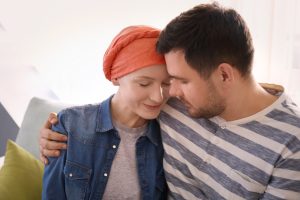
“I don’t know who I am without her,” he said tearfully. “She’s my best friend.”
I nodded. “She sounds wonderful. I can’t begin to imagine how you’re feeling.”
I visited him daily. Once after morning rounds, and again in the afternoon. Some days he wanted to ask exactly what a ‘bilirubin’ was, others were him showing me photos to relive a memory. I listened without steering the conversations. Slowly, he began asking more about hospice, though he’d always add, “I’m just asking. That’s all.”
When the palliative care team arrived, they took the time to meet him and explain their role. They spoke about comfort, about dignity, about how hospice didn’t mean giving up, but choosing how she would spend her remaining time. They answered his questions and addressed his fears. Some days he stormed out, others he lingered a little longer to hear them. Their patience reminded me that professionalism doesn’t demand immediate agreement but allows space for uncertainty. Over time, his uncertainty stopped consuming him.
When he began to listen instead of walking away, I felt his grief change from anger, to fear, to something that resembled trust and acceptance. It was no longer the team versus him. He saw that we were on the same side.
I will never forget the anger in his voice that morning. In that moment, the mechanisms of disease and memorizing treatment protocols no longer mattered. I used to think professionalism was about knowing the answers. But I now understand it’s just as much about standing with patients and their loved ones in their darkest moments. It is about being steady in the storm of others’ pain. It is about having the courage to hold someone’s suffering alongside them.
Some things, as doctors, we cannot fix. But trust is an exception. It is earned by remaining present, even when the bridge gets shaky. As a student, I didn’t need to make any grand gestures. I simply needed to stay.
We can ask, “Can you tell me about her?” And then, we can listen. Because while some words are heavier than others, trust has a weight of its own that can be powerful enough to help carry people through.
Rana Barghout is a third-year medical student at Weill Cornell Medicine. She earned her bachelor’s degree in neuroscience from Amherst College. She is passionate about improving care for vulnerable populations and advancing health equity. In her free time, she enjoys stand-up comedy shows, escape rooms, and exploring New York City.

